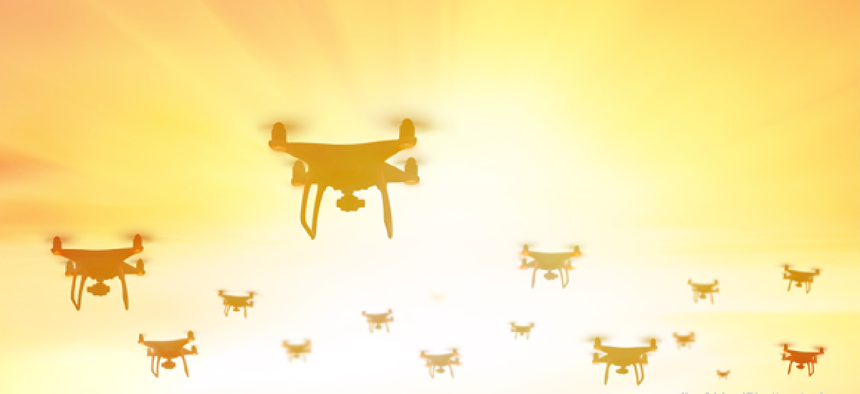Army kicks off first major test to thwart small drone attacks
The Army is putting its new counter small drone strategy to the test with its first demonstration at Yuma Proving Ground, focusing on how to limit damage when facing direct threats.
The Army is putting its new counter small unmanned aerial systems strategy to the test with its first demonstration at Yuma Proving Ground, focusing on how to limit damage when facing direct threats.
Leland Browning, the deputy director for the Joint Counter-Small Unmanned Aircraft Systems Office (JCO), said the Army has completed its first small drone demo, testing intercept capabilities from three different platforms.
This first demonstration, which was a joint effort between the JCO, Army and Air Force, was designed to look at "low collateral effects intercepted capabilities, which are defined solutions that defeat small UAS in an environment that requires minimal minimum collateral damage for the surrounding environment," Browning told reporters April 16.
Low collateral effects loosely refers to reducing the mess that can result from counter drone collisions. Browning said the demo was looking at how to reduce the amount of fragmentation that is associated with "an event" and "technologies that can possibly mitigate a threat entering into the area without causing that."
That includes methods of "entanglement" so that the drone would just fall to the ground or be captured and brought back to a safe area for further examination.
The Air Force teamed with the Army for the April demonstration as the service leads expertise in low collateral effects. Test flights included up to 16 different scenarios, such as when a threat was directly flying at it, crossing patterns and various speeds and heights.
The demonstration is a test of the Pentagon's counterdrone strategy, released in January, which designated the Army as the lead for the effort. Counter unmanned aerial systems technologies have become an increased focus for the Defense Department to keep pace with drones' proliferation.
The strategy tackles how DOD will deal with drones domestically, in host nations and during contingency operations by aligning research and development efforts, developing common solutions,and increasing partnerships.
But data will be a linchpin to bringing the strategy forward. Browning said the April drone demo yielded a trove of data the Army now has to sift and analyze. That data will help "make sure that these were getting an accurate report of what happened on the test range" and be put in a final report to be disseminated throughout the organization. It will later get relayed to industry partners for feedback.
The Army is planning two demonstrations every year with the next scheduled for September. Future demos will look at other drone capabilities, such as electronic effects, but the scope of focus hasn't yet been determined.
So far, the biggest takeaways have come from proving out joint testing procedures across the services, lessons that will be used for the September demo.
"The bottom line is that I think that we came up with a good process to validate our joint testing procedures and it will inform, basically, how we do better in the future," Browning said.
This article first appeared on FCW, a Defense Systems partner site.





